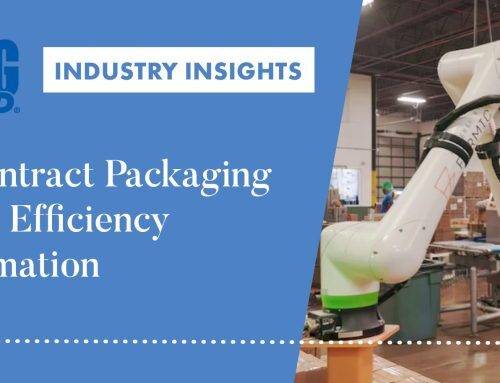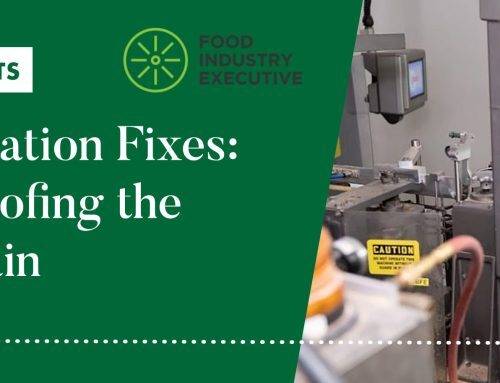In 2018, OneRepublic released the hit single “Connection.” The song explored the growing isolation among people in a connected world. Ryan Tedder croons “Can I get, can I get a connection?” as black and white footage shows him walking aimlessly amongst a sea of people in a busy airport. Many hold their palms in front of their faces, mimicking our use of mobile technology.
Eerie, yet relevant.
While the latest packaging and processing technology was a hot topic at Pack Expo this September in Las Vegas, we believe the relationship between CPGs and contract packaging partners is rapidly shifting from transactional to relational. In GreenSeed’s previous blog, “Co-Manufacturing: Is There a Steep Cost of Cheap?” we explored how commitment, trust, and communication bring value to CPGs focusing less on capital investment and more on marketing.
So, we asked:
To dive deeper, and get a better understanding of the future of technology, we spoke with supply chain industry veteran Hank Canitz, vice president of industry solutions for Nulogy, a Canadian-based software solution provider to leading brands (including GreenSeed!).
Canitz started out as an aerospace engineer for McDonnell Douglas, earned a master’s degree in supply chain management from Michigan State University and then held supply chain positions with Verizon, Conagra Foods, Brunswick, and First Data overseeing planning and execution operations. Before joining Nulogy early in 2021, Canitz held marketing and sales leadership positions with J.D. Edwards, SAP, QAD, GT Nexus, and Logility.
In other words, he’s that rare person who sees the connection between tech and people, business and customer.
Are Spreadsheets Still a Thing?
Canitz says, “From our experience, about 25% to 30% of an average CPG company’s products are being produced outside their facilities.” This trend, he says, is fueling a co-pack industry growth of 10.2% compounded annually per the Contract Packaging Association. The pandemic accelerated the trend as brands aim to meet growing consumer demand.
“There have been a lot of new CPG-type companies coming on the market who specialize in selling their products through e-commerce channels. They’re not building manufacturing plants: they are the brand, but they have no internal manufacturing. They rely on third parties like GreenSeed to provide that capability for them,” said Canitz.
So, the way CPGs are using contract packagers is changing, but, as Canitz points out, many big CPGs are still managing this relationship using traditional tools like spreadsheets and phone calls.
How’s that going to work? Not well.
The old way of doing business uses a one-to-one model where there is one system for each customer-supplier relationship. The downside here is that a contract supplier sees data from each customer in isolation. You lose context as to how a new order from one customer, for example, might affect orders being run and equipment being used by another customer. You lose what Canitz calls “end-to-end visibility,” or visibility across the entire customer ecosystem.
The new way of doing business uses a many-to-many model, referred to as a Multi-Enterprise Supply Chain Business Network (MESCBN), which helps all partners have access to the consolidated data set they need to effectively run their operations. And accordingly, MESCBN technology enables this many-to-many supply chain model. “The Nulogy Platform, for example, provides one network for CPG customers to connect with multiple contract packagers and vice versa. Near real-time visibility and process collaboration of a contract supplier’s shop floor operation helps enable the same type of capabilities for the contract supplier as CPG brands have come to expect from their internal operations,” said Canitz.
Near real-time operational data visibility and process collaboration can also be used to improve operational efficiency, speed up response times, and improve on-time delivery. The average Nulogy enabled multi-enterprise network achieves a 20% better On-Time and In-Full (OTIF) performance over industry average, while delivering a 24% labor cost advantage and a 25% higher growth rate than industry average.
The Holy Grail: Transparency
“Visibility speeds up the supply chain, provides insights, and reduces costs because you can use information to reduce inventory, improve operating efficiency, and reduce waste."
–Hank Canitz, vice president of industry solutions for Nulogy
What do you do with all that rich data? That’s when Canitz brought up pizza.
“When you order a pizza from Domino’s, they’ll send you updates like ‘Your pizza is going in the oven, your pizza is out of the oven, the driver’s three minutes away . . .’ That’s for a $10 pizza. Business-to-business customers are wondering why they can’t get this same level of service and transparency when they’re talking about a hundred thousand dollar order. It’s crazy we’re still struggling with that. The problem is data visibility.”
He cites transparency, visibility and collaboration as being essential tools for connecting a contract manufacturer or co-packer with a CPG. And not just for network partners, but for the consumer.
“All you have to have is the data associated with a barcode and you can scan the barcode with your camera on your phone to pull up all kinds of really rich information. People want to know where their products are coming from. They want to know what material went into the product and how they were produced from a sustainability standpoint. Transparency is huge.”
He adds, “Visibility speeds up the supply chain, provides insights, and reduces costs because you can use information to reduce inventory, improve operating efficiency, and reduce waste. Right now, if you don’t have near real-time information, you accumulate inventory, which leads to distressed inventory and waste. If you have up-to-date information, you can minimize uncertainty and reduce risk.”
Beyond Industry 4.0
While having visibility sounds achievable, most manufacturers are simply not there – yet. Leading companies have used Industry 4.0 technologies to drive their digital transformation journey. However, most of this transformation to date has been inside a company’s four walls, through ERP and APS systems which are examples of single enterprise solutions. The adoption of multi-enterprise solutions, which share data across multiple enterprises, has only just begun. Through multi-enterprise solutions, data flows beyond the internal component, reaching downstream to the customer and upstream to the supplier.
That’s the roadmap to end-to-end supply chains which, Canitz says, is a rather nebulous word – although perhaps not for long. “Companies will be able to expand their view when they put these multi-enterprise systems in place,” he says.
The use of advanced planning solutions to enable what-if scenarios and simulations of their internal supply chain operations is nothing new for leading CPG manufacturers. However, that same APS can now be used with both external and internal data to expand the CPG’s analysis of their internal and external supply chain. If a retail customer drops a new order, for example, a CPG manufacturer, through the use of their expanded digital twin, can determine whether their contract suppliers can meet that order. The CPG manufacturer uses their near real-time visibility to their contract suppliers’ available capacity and inventory to quickly respond to their retail customer’s request.
Extending Operations Through Data Impacts Recall Capabilities and Traceability
“Digital traceability is what we should be talking about to reduce risk and cost of recall,” comments Canitz. “It gives you the data granularity to recall a smaller portion of production. If the product is coming from upstream, it’s hard to do that quickly if it’s a manual process.”
For example, anyone who loves Caesar salad knows about the romaine lettuce problem. “The problem they ran into was that it was contaminated – not at the field level or picking the product – but contaminated in a storage facility,” said Canitz.
“Every step in the supply chain needs to be digitally captured to determine what happened. Unfortunately in this case that didn’t happen. When manual data was analyzed it was realized that other products were in that facility and that led to more recalls as a safety measure even though those products may not have been affected. That all took time. There wasn’t any digital information.”
“When these things happen, the food and beverage companies pull data and start investigating. Even if they have some data, it’s usually at a higher level requiring a larger recall and destruction of product. The lack of digitally captured data delays the recall process and puts people at risk.” The difference, he points out, between responding in a day versus half an hour can be huge from the standpoint of cost and customer injury.
Are We Connecting or is it Hype?
“It’s a fun time to be in supply chain because it’s evolving so fast. Just when you think you’re done, your customers and competitors will drive you to improve.”
–Hank Canitz, vice president of industry solutions for Nulogy
Technology adoption means change and change oftentimes crawls forward slowly. Tools like email, spreadsheets, phone calls and virtual meetings are old friends. Canitz points out that the $100 million supplier might have an EDI connection and the contract supplier will verify the order via EDI to the CPG so they know when it’s coming. But in between, if there’s a change on the order and the CPG doesn’t know if the third party can meet that change or flex up 20%, there is no visibility to know the answer except for a phone call.
Other partners might use a supplier portal for a one-to-one connection. They might send the order over and confirm the order, but there is no direct data feed into that portal and, thus, no near real-time visibility of shop floor data.
Canitz said, “It’s a fun time to be in supply chain because it’s evolving so fast. Just when you think you’re done, your customers and competitors will drive you to improve.”
Without question, the more connected company will continue to synchronize closely with its external manufacturing partners.
To close out our conversation, we turned to baseball (after all, it is still summer). Though he lives in Arizona, Canitz grew up a Brewer’s fan. During his tenure in Denver, he rooted for the Rockies. “They weren’t the Yankees or the Giants, but smaller teams do great things,” he said. Now that he lives in Diamond Back country, he admits that, while the Brewers are doing well this year, his other teams are not. “We’re behind the Padres, I mean, come on,” he says.
It was a prophetic ending to our conversation about technology and people. Perhaps being first isn’t as important as how you play the game. Perhaps the real winners in business wear the same jerseys as the teams Canitz has always favored – teams that are connected and that work together to do great things. ![]()




![Three [3] Ways Food Safety is Being Redefined](https://greenseedcp.com/wp-content/uploads/2023/03/03-06-23_Three-3-Ways-Food-Safety-is-Being-Redefined-Industry-500x383.jpg)





